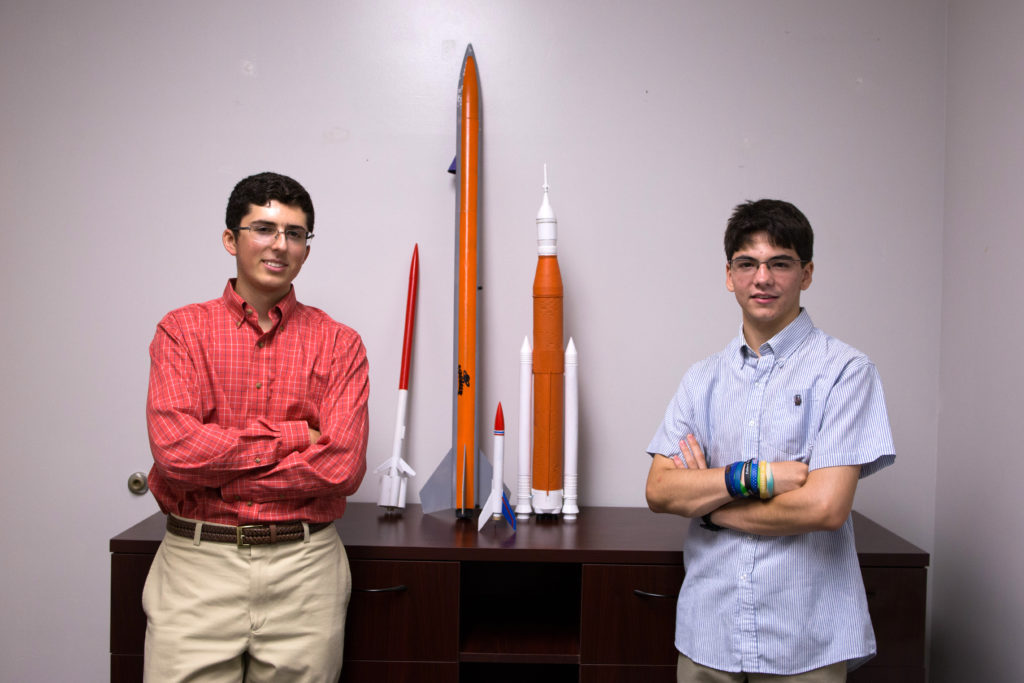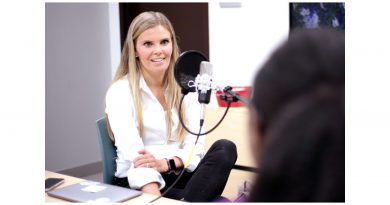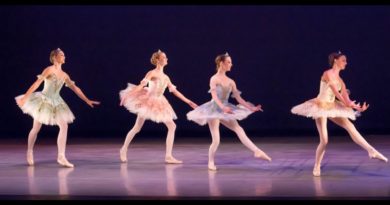High School Students To Launch Rocket Into Space
In just one lunchtime conversation last November, two high school juniors brainstormed and exchanged ideas, simulated rocket launches online, and began to devise a project that could make them the first high school students to reach space.
Adrian Ruiz, 17, and Sebastian Abisleiman, 18—now seniors in the School for Advanced Studies (SAS) at Wolfson Campus— met on the fifth floor of building 5 to appease their hunger and indulge in their passion for space exploration.
“Let’s see if it goes a little higher,” they said, as they eagerly played with the size of the rocket and its engine using an online rocket simulator, aiming to increase its altitude.
Their goal is to design a rocket that can pass the Karman Line, located in the thermosphere roughly at 62 miles above sea level, which divides the Earth’s atmosphere and outer space. It marks the beginning of what is considered outer space.
The night before, Ruiz thought of launching a small rocket from a balloon. He was inspired by the rockoons used by the U.S. Air Force, that is, rockets launched from balloons 99 percent above the mass of the atmosphere as opposed to being launched from the ground. The method saves fuel and allows the rocket to achieve a faster speed since the air resistance gets lower the higher the rocket travels.
After Ruiz simulated the idea using OpenRocket with Abisleiman the following day, they discovered that by using balloons it was possible for a small rocket with a large engine to reach space.
That week, Ruiz contacted Guinness World Records to find out if other high school students had ever sent a rocket into space. No such records exist.
The finalized project, named High Altitude Rocket Transport (HART), consists of a 27-inch-long, 2.19-inch-wide rocket with a powerful 16-inch K-engine, launched from a triangular wooden launch pad with three 1,200-kilogram high altitude balloons attached. Once the balloons rise to about 18 to 20 miles above sea level, the rocket will detach from the launch pad propelling them past the Karman Line in 90 seconds.
Ruiz and Abisleiman have been fascinated by space and involved in model rocketry since they were children.
“I enjoy learning about how big the universe is, how everything works,” Ruiz said. “We’re so tiny compared to everything else. I find it enjoyable learning about everything that NASA has done, not only finding a way to launch a rocket…but figuring out how to make electricity more efficiently, how to purify water.”
Ruiz aspires to work in NASA’s Ground Systems Development and Operations program and eventually become an astronaut. Although unsure of what path to take in engineering, Abisleiman has a marked interest in aerospace and chemical engineering. Ruiz hopes to attend the California Institute of Technology while Abisleiman is considering schools like the University of Pennsylvania and Georgia Institute of Technology.
After watching space documentaries as a kid, Ruiz became more interested in the cosmos. He launched his first model rocket in sixth grade and was part of the rocketry club at Christopher Columbus High School. Coming from the Design and Architecture Senior High School, Abisleiman was also involved in model rocketry, combining his creativity and inclination for science.
The curious duo first met right before their junior year during mentor/mentee day at a back-to-school picnic event for SAS Wolfson Campus students at Bayfront Park. The program enables students to simultaneously complete their last two years of high school and first two years of college.
At the beginning of their junior year they founded the SAS Model Rocketry Club. That year they launched rockets three times and helped club members build rockets.
The organization, which currently has about 24 members, is planning several rocket launches and will participate in building the rocket and performing test launches for HART.
“This is way beyond the ordinary scope of things that high school students can do,” said Stanley Walker, a mathematics teacher at SAS at Wolfson Campus and the rocketry club sponsor. “It’s wonderful to see that they’re doing everything on their own; this is 100 percent their motivation, their initiative and their hard work.”
To complete the project, Ruiz and Abisleiman need to obtain permission from the Federal Aviation Administration (FAA). They started the FAA paperwork this past May and are still in the process of receiving the permit for their first test launch in November.
They began by looking for a high power rocket certification. After weeks of contacting multiple FAA representatives, they finally reached Michael Harlow, a contract support specialist based in Atlanta, who has been helping them with the paperwork.
The main requirements for the FAA permit are the location, times of launching, launching procedures and the specifics of the project.
“My biggest concern was that all the rules and regulations of the law were being followed, because ignorance of the law does not exempt you from breaking the law,” said Anna Tous, Abisleiman’s mother. “But Adrian and Sebastian are all serious about it. I thought it was a challenge, but I supported it since the beginning. It’s exciting. Science is all about trial and error. If you don’t try you don’t succeed.”
The official launch date is May 20 in northern Florida near Capps, which is located 30 miles east of Tallahassee. The location was chosen primarily because it is a desolate rural area with no airports or urban centers nearby.
The balloons will be launched at 5 a.m. and will take anywhere from three to five hours to lift up to 100,000 feet above sea level, depending on the weather. From there, the rocket will disconnect from its electronics and ignite to achieve a maximum speed of 2,720 miles per hour after 2.5 seconds at 105,000 feet above sea level. The rest of the way the rocket will be decelerating and will reach peak height after 130 seconds and start falling back down, which will take about nine minutes.
The rocket will be made out of Carbon Fiber-Kevlar mesh and high temperature epoxy resin. Its color will be neon orange to comply with FAA guidelines that require the rocket to be a bright color. It also has a GPS that will allow them to track the rocket for 15 minutes after landing.
Ruiz and Abisleiman have conducted online research to determine what parts to buy for their project. They already have some of the equipment, such as the three motion action cameras with a 135° field of view. Another record will be capturing the first 360° video from space that will be shared on their website and YouTube page.
In order to buy the rest of the equipment they need more funding, which they are planning to obtain through donations. They have fundraised around $1,600 thus far and estimate the entire project to cost around $5,000. They are accepting contributions through their website and a GoFundMe page.
Jeffrey Dearing, an AP English teacher at SAS, helped Ruiz and Abisleiman by scrutinizing the language on the project’s website and gauging the sincerity and usefulness of the advice they received from online tech communities.
“SAS has helped a lot in this because it gives us the opportunity to take the classes that we need to actually be able to do it,” Abisleiman said. “We also have all the core classes we need, but we also have the opportunity to do extracurriculars and take them to whatever extent that we want.”
Ruiz is currently taking Physics and AP Calculus AB and has taken chemistry and astronomy, while Abisleiman has taken AP Calculus BC and is currently taking physics with calculus, which are all classes that have helped them with the math and science components of the project.
“People always mention rocket science as the toughest thing you can do. It’s actually pretty easy,” Ruiz said. “It has a lot of science and space and it’s not purely the tough science. It’s a mixture of everything.”
Any extra funds collected for HART will be donated to the SAS Model Rocketry Club. Ruiz and Abisleiman hope to motivate other students to continue the tradition after their dream becomes a reality.
“Kids like Adrian and Sebastian should be encouraged to put their ideas into action as soon as they’re capable,” Dearing said. “Sitting around and musing about what they might do is a waste of talent and time, and an education should teach you that the only things that matter are your deeds, and deeds should begin as dreams.”
For more information on the project or to donate, visit: http://hartvr.wixsite.com/hartvr



